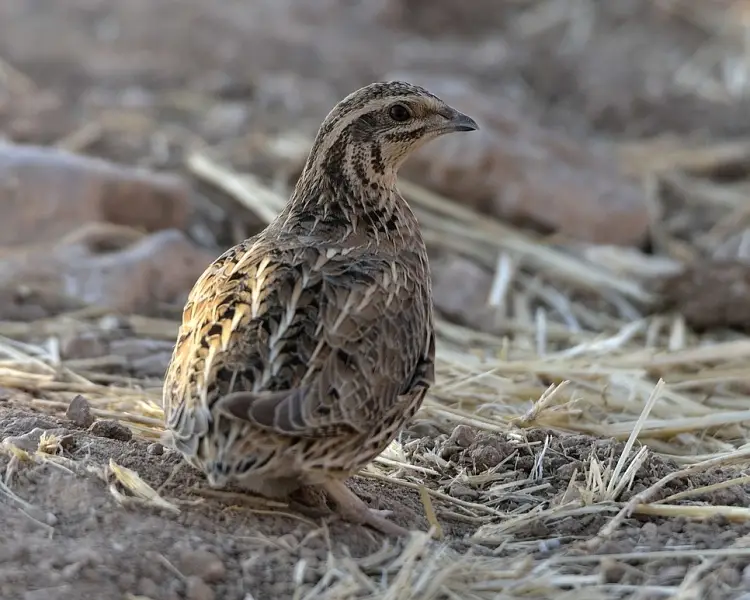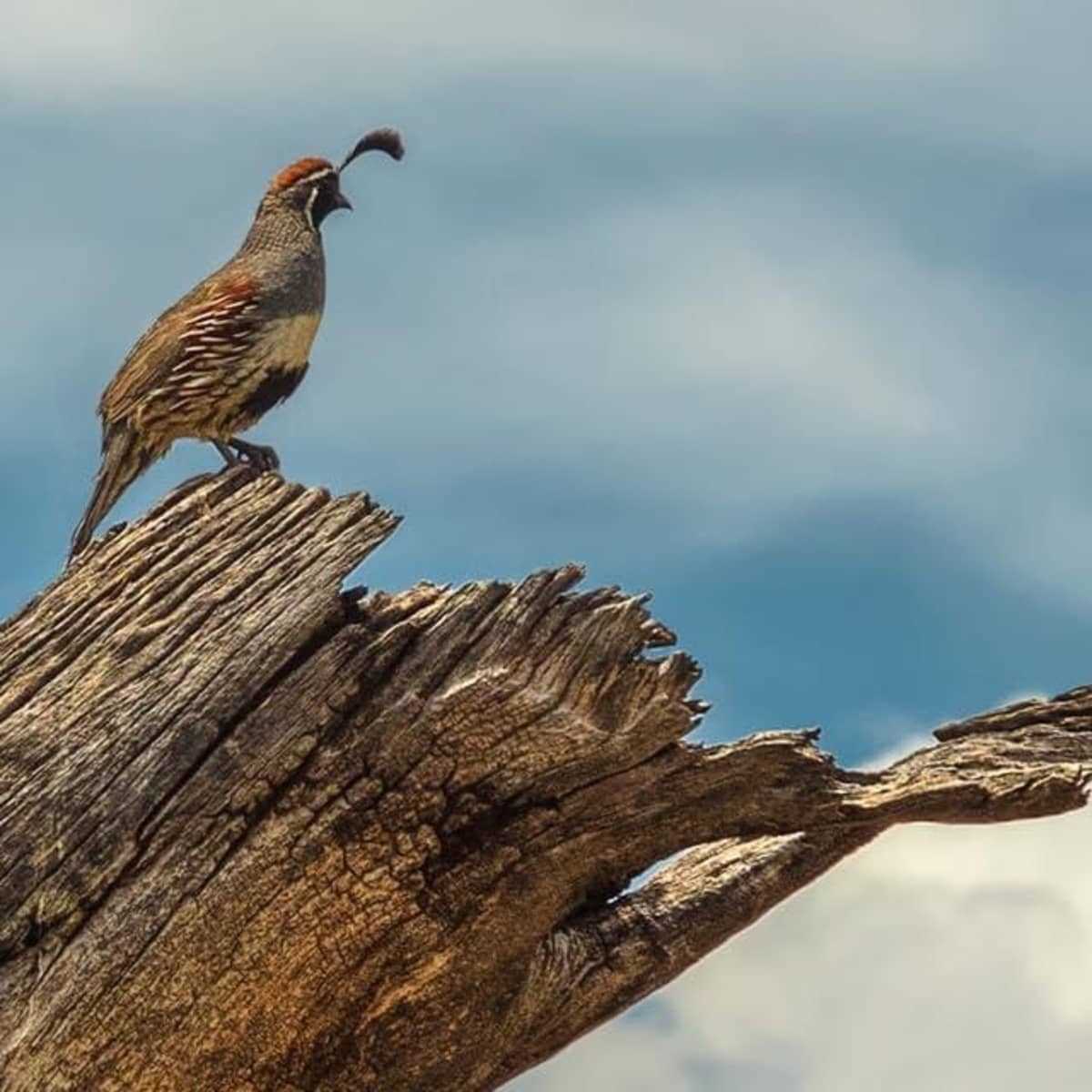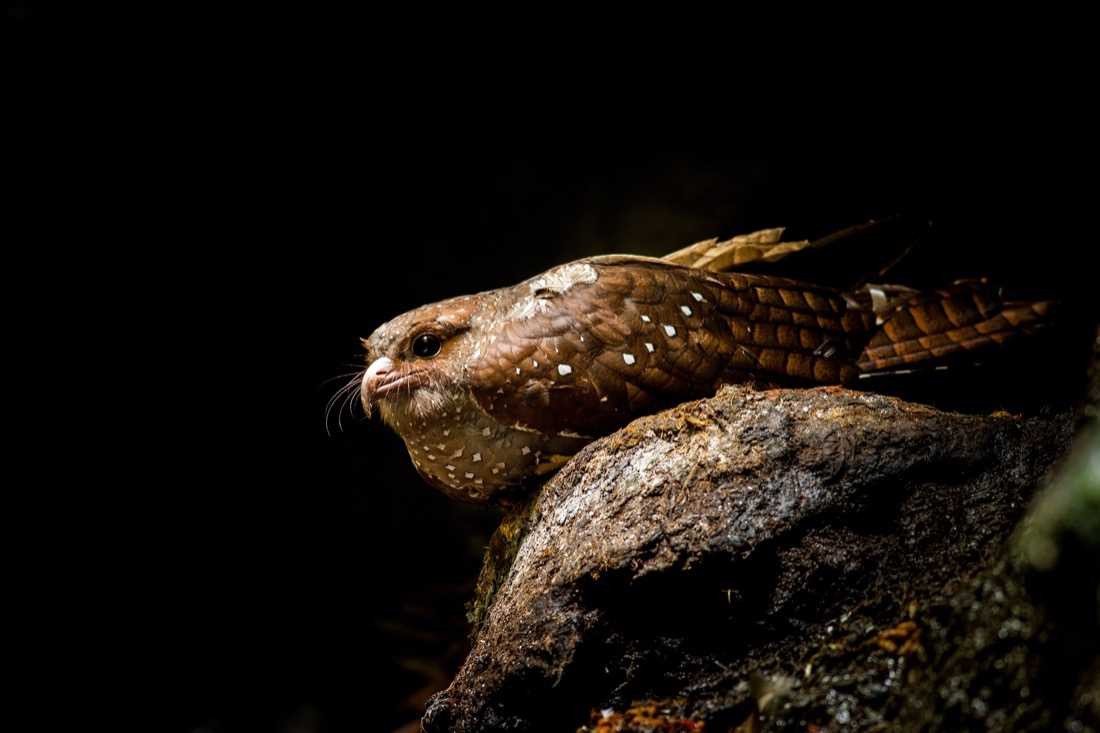Contents
Unraveling the Mysteries of the Nocturnal Night Quail: All the Essential Facts You Should Know

When the sun sets and darkness envelops the world, a magical transformation takes place. As the feathers of diurnal birds blend into the obsidian canvas of the night, a new cast of characters emerges. Among them, the sleek and elusive night quail commands attention, captivating both the curious minds and the avid birdwatchers.
Under the enchanting glow of the moon and the shimmering stars, the night quail embarks on its nocturnal journey. In the silence of the midnight hour, it orchestrates melodies of its own, serenading the night with its melodious call that pierces through the stillness. Its haunting sound, a blend of power and vulnerability, echoes through the offing, evoking a sense of awe and mystery.
Often unrecognized and overlooked, the night quail possesses a unique set of adaptations that allow it to thrive in the darkness. With its feathered attire, the quail effortlessly camouflages itself within the moonlit landscape, seamlessly merging with the shadows. Its darker plumage serves as a cloak, concealing it from prying eyes and enhancing its survival in a world dominated by predators.
While the night quail does not possess the keen eyesight of its diurnal counterparts, it compensates for this with its acute hearing and sense of touch. This remarkable bird relies on its finely tuned auditory perception to navigate through the night, moving stealthily among the underbrush and deciphering the subtlest of sounds. Its sensitive feet, equipped with sensory bristles, enable it to detect the slightest vibrations that reverberate through the soil, guiding its path in the veil of darkness.
Night Quail: Everything You Need to Know about This Fascinating Nocturnal Bird

The night quail, also known as the nocturnal quail, is a captivating bird that truly comes alive in the darkness. With its soft feathers providing it with the ability to fly silently, it effortlessly glides through the night, making it nearly invisible to the naked eye.
In the moonlit midnight hours, the night quail showcases its remarkable survival skills. It navigates effortlessly through the darkness, relying on its exceptional sight to forage for food and avoid predators. Its highly-developed eyesight allows it to see clearly, even in the dimmest of light, giving the bird a distinct advantage in its night-time habitat.
The night quail’s preferred time for activity is, as its name suggests, during the night. As the sun sets and darkness envelops the world, the quail emerges from its hiding spot and ventures out into the moonlit night. This is when its true beauty is revealed, as its feathers shimmer under the moon’s gentle glow, creating a mesmerizing sight.
One of the most intriguing aspects of the night quail is its ability to communicate in the dark. As other birds settle down for the night, the quail’s distinctive call can be heard echoing through the night sky. It is a unique sound that seems to carry far in the stillness, marking the presence of this elusive nocturnal bird.
The night quail’s adaptation to the night has allowed it to thrive in environments that would be challenging for diurnal birds. It has become a master of the night, utilizing its remarkable senses and silent flight to move effortlessly through the darkness. This bird serves as a reminder that nature’s beauty extends beyond the daylight hours, and in the quiet of the night, the night quail reigns supreme.
Habitat and Distribution

The night quail, also known as the nocturnal quail, is a fascinating bird that has adapted to a unique habitat and distribution. It is primarily found in regions with minimal light pollution, allowing it to thrive in darkness.
The night quail’s habitat consists of areas with dense vegetation, such as grasslands, meadows, and shrublands. These habitats provide the quail with ample cover and protection during the day when it rests. It prefers areas with tall grasses and thickets, where it can easily hide from predators.
One of the most interesting aspects of the night quail’s habitat is its nocturnal behavior. This bird is most active during the night, making it well-adapted to its dark surroundings. Its feathers are finely tuned to help it navigate in the darkness, allowing it to fly silently and avoid obstacles. The night quail’s exceptional sight also plays a vital role in its survival, as it can detect movement and spot prey in low-light conditions.
The distribution of night quails varies depending on the species. Some are found in specific regions, while others have a more extensive range. Generally, these birds can be found in parts of Europe, Asia, and Africa. In Europe, the night quail can be spotted in countries such as Italy, Greece, and Spain. In Asia, it is found in countries such as India and China. In Africa, it can be found in countries like Kenya and South Africa.
Despite their widespread distribution, night quail populations are not always easy to spot. Their elusive nature and preference for nocturnal activities make them a rare sight for many birdwatchers. However, those lucky enough to witness a night quail in action are treated to a magical sight as they glide through the midnight sky, their feathers shimmering under the light of the moon and stars.
| Common habitats: | Grasslands, meadows, shrublands |
| Preferred features: | Tall grasses, thickets, minimal light pollution |
| Distribution: | Europe, Asia, Africa |
| Notable countries: | Italy, Greece, Spain, India, China, Kenya, South Africa |
Natural Habitats of Night Quail

The night quail is a fascinating nocturnal bird that thrives in the darkness of the night. Unlike many other birds that are active during the day, the night quail comes alive under the moon’s gentle glow. Its silent flight and soft feathers allow it to navigate through the darkness with ease.
The natural habitat of the night quail is diverse, ranging from open grasslands to dense forests. These birds are often found in areas with low light pollution, as they rely on their keen sight to search for food and avoid predators. They are most active during the midnight hours, when the world is quiet and the moon is high in the sky.
One of the remarkable things about the natural habitats of night quail is their ability to adapt to different environments. They can be found in various regions across the globe, including North and South America, Europe, Africa, and Asia. Each of these regions provides unique challenges and opportunities for the night quail to thrive.
In open grasslands, the night quail uses its excellent camouflage to blend in with its surroundings. This allows it to hide from predators and search for insects and seeds, which make up the majority of its diet. In dense forests, the bird takes advantage of the cover provided by the trees and undergrowth to find food and build nests.
The night quail’s natural habitats offer a sanctuary for this enigmatic bird. Away from the hustle and bustle of the day, they can roam freely in the moonlit night, undisturbed by human activity. The beauty and mystery of the night quail’s natural habitats make it a truly captivating creature that inspires awe in all who encounter it.
Geographic Distribution

Quail are found in various regions around the world, including North America, Europe, Asia, and Africa. They have adapted to different habitats and can be found in grasslands, woodlands, and even deserts.
These nocturnal birds are most active at night when the darkness allows them to blend in with their surroundings. They use the stars and moon to navigate and rely on their keen sight to find food and avoid predators.
The feathers of quail are designed to help them fly silently through the night. The soft texture and intricate patterns of their feathers allow them to move swiftly through the air without making much noise.
Despite their preference for the night, quail can also be found during the day, especially during the breeding season. During this time, male quail will often call out to attract mates, creating a chorus of sound in the otherwise silent night.
- In North America, quail species such as the Bobwhite Quail can be found throughout the United States, with different subspecies inhabiting specific regions.
- In Europe, the Common Quail is widespread and can be found in various countries, including the UK and France.
- In Asia, a variety of quail species can be found, including the Japanese Quail and the Blue-breasted Quail.
- In Africa, the Harlequin Quail and the African Blue Quail are two common species found in different regions of the continent.
Overall, the geographic distribution of quail is vast, and these fascinating nocturnal birds are a remarkable sight to behold in the darkness of the night.
Appearance and Behavior

The night quail is a fascinating and mysterious bird that comes alive in the darkness of the night. It is most active during midnight when the moon and stars provide the only source of light. With its small size and dark feathers, the night quail is perfectly adapted to blend in with the darkness, making it nearly invisible to predators.
One of the most distinctive features of the night quail is its silent flight. It has specially adapted feathers that muffle the sound of its wings, allowing it to move swiftly and silently through the night without attracting attention. This stealthy behavior helps the night quail to hunt for insects and small creatures without alerting its prey.
During the night, the night quail uses its keen eyesight to navigate through its nocturnal habitat. Its large eyes are designed to gather as much light as possible, allowing it to see in the darkness with great clarity. This helps the night quail to locate food sources and avoid obstacles during its nightly foraging adventures.
Despite its small size, the night quail is known to have a strong and agile flight. It can swiftly change directions and perform intricate aerial maneuvers, allowing it to evade predators and navigate through dense vegetation. This adaptability is crucial for the night quail’s survival in its nocturnal environment.
In conclusion, the appearance and behavior of the night quail make it a truly unique and remarkable bird. Its ability to blend in with the darkness, fly silently, and navigate with precision in the night sky showcases its incredible adaptations to the nocturnal lifestyle.
Distinct Features of Night Quail

The feathers of the night quail are specially designed to help them navigate through the darkness of the night. These feathers are soft and provide soundless flight. The unique structure of their feathers allow them to move through the air with minimal noise, making them excellent at stealthy movements.
One of the most fascinating features of night quail is their exceptional sight in the dark. Their eyes are adapted to low light conditions, allowing them to see clearly even in the darkest of nights. This amazing visual ability enables them to find their way and hunt for food under the starlit sky.
Speaking of stars, night quails are known to be active during the night, particularly at midnight. They are often seen roaming around in search of insects and seeds under the blanket of darkness. These birds are perfectly adapted to living in the night, utilizing the cover of darkness to their advantage.
The stealthiness of the night quail is also enhanced by their ability to move around silently. Unlike many other birds, these quails produce very little noise when they walk or fly. This makes them difficult to detect by predators or other animals. Their silent movements allow them to remain hidden and avoid potential dangers in their nocturnal habitat.
Nocturnal Behavior

Stars twinkling in the night sky, illuminated by the glow of the moon, create an eerie darkness that is perfect for the night quail. With its soft and fluffy feathers, this nocturnal bird thrives in the midnight hours, when the world is steeped in silence and the only sound that can be heard is the gentle rustling of leaves.
Unlike many other birds that rely heavily on their sense of sight, the night quail has adapted to navigate through the darkness using its exceptional hearing. Its large, sensitive ears allow it to detect even the faintest sounds, allowing it to hunt for food and avoid predators.
With its keen sense of sight, the night quail can easily spot its prey in the dark, making it a formidable hunter. Its eyes are specially adapted to low-light conditions, allowing it to spot movement and capture insects and small animals with precision.
As the night falls, the night quail emerges from its hiding place, ready to explore its surroundings. With the moon as its guide, it ventures into the unknown, relying on its ability to move silently and swiftly to avoid detection.
The night quail’s nocturnal behavior is truly fascinating, as it has evolved to thrive in the darkness of the night. Its unique adaptations and exceptional senses allow it to navigate, hunt, and survive in a world that is often unseen by others.
Reproduction and Life Cycle

The night quail’s reproduction and life cycle are tightly intertwined with the enchanting beauty of the night sky. Under the cover of darkness, these birds embark on their annual mating rituals.
During the breeding season, male night quails utilize their unique ability to create mesmerizing sounds that resemble the twinkling of stars. Their melodic calls echo through the silent night, serving as a declaration of their presence and suitability as a mate.
Once a female night quail is enticed by a male’s song, they engage in a courtship display that is a sight to behold. The male flutters his intricate feathers with grace and agility, showcasing his vitality and desirability. In response, the female may reciprocate with her own charming dance, confirming her interest in a potential mate.
In the depths of the midnight hour, amidst the soft glow of the moon, the night quail’s reproductive journey continues. The female constructs a nest hidden in the darkness, carefully weaving together materials such as soft grasses and feathers.
After the nest is complete, the female lays her eggs, often numbering three to six. These eggs are delicately speckled, blending seamlessly into the surrounding darkness. The female then incubates the eggs, patiently waiting for their development.
Within a few weeks, the night quail chicks begin to break through their shells, emerging into the world under the cover of darkness. Their downy feathers are camouflaged, allowing them to navigate their nocturnal habitat with ease.
As they grow, the night quail chicks rely on their parents for nourishment, their soft calls echoing through the night as they express their needs. Slowly but surely, they develop their adult plumage, mirroring the beauty of the starlit sky.
With the passage of time, the night quail matures and attains full reproductive capabilities. It is then their turn to join the nocturnal orchestra, contributing their melodic sounds to the symphony of the night and continuing the cycle of life.

A skilled hunter, dedicated conservationist, and advocate for ethical practices. Respected in the hunting community, he balances human activity with environmental preservation.
